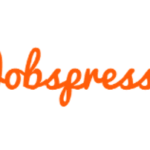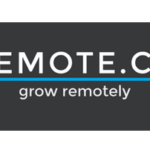Picture this: it’s 10 a.m. on a Tuesday, and I’m sitting in my makeshift home office—a corner of my dining room table, if I’m being honest—sipping lukewarm coffee and staring at a blank job application. Sound familiar? Job hunting is tough enough, but doing it remotely? That’s a whole different beast. The distractions are endless (hello, Netflix), the motivation can waver, and the isolation? Don’t even get me started. But here’s the thing: with the right productivity strategies, you can turn your remote job search into a well-oiled machine. I’ve been there, and I’ve learned a thing or two—sometimes the hard way. So, grab your favorite mug, settle in, and let’s dive into six productivity secrets that’ll help you land that dream remote gig.
Why Productivity Matters in a Remote Job Search
First, let’s get real about what productivity means when you’re hunting for a remote job. It’s not just about churning out applications like a robot. It’s about working smarter—focusing on the right tasks, staying organized, and keeping your sanity intact. Remote job searches come with unique challenges: you’re competing in a global market, your digital presence is your handshake, and self-discipline is non-negotiable. Mess it up, and you’re lost in a sea of browser tabs and missed deadlines. Nail it, and you’re the candidate who stands out. So, how do you nail it? Let’s break it down.
Secret #1: Master Your Time Like a Pro
Time management isn’t just a buzzword—it’s your lifeline. Back when I was job hunting in 2022, I’d wake up with grand plans to apply to ten jobs, network on LinkedIn, and maybe learn a new skill. By noon, I’d be doom-scrolling job boards, paralyzed by choice. Sound like you? Here’s what I learned: structure saves you.
Start by creating a daily schedule. Block out specific times for researching companies, tailoring resumes, and following up on applications. I love time-blocking—dedicating, say, 9 to 10 a.m. for applications and 11 a.m. to noon for networking. Tools like Google Calendar or Trello can keep you on track. Pro tip: set timers. I use the Pomodoro technique (25 minutes of focused work, 5-minute break), and it’s a game-changer. It’s like tricking your brain into thinking, “Oh, this is just a sprint, not a marathon.”
But here’s the kicker—stick to it. I once scheduled a “networking hour” but ended up binge-watching a true-crime documentary. (Oops.) Be honest with yourself. If you’re slipping, adjust the plan, but don’t ditch it. Why? Because a schedule gives you control in a process that often feels like chaos.
Secret #2: Craft a Workspace That Works
Let’s talk about your workspace. When I started my remote job search, I thought I could work from my couch, laptop balanced on a pillow, with my cat plotting world domination on my keyboard. Spoiler: it didn’t work. A productive workspace isn’t just a nice-to-have; it’s essential.
Set up a dedicated area—doesn’t have to be fancy, just functional. A desk, a comfy chair, good lighting. Clear the clutter (yes, that pile of laundry counts). I splurged on noise-canceling headphones, and let me tell you, blocking out the neighbor’s lawnmower was worth every penny. If distractions are your kryptonite, try the Pomodoro technique again or apps like Focus@Will for background music that boosts concentration.
And here’s a personal tip: keep your workspace separate from your chill zone. When I worked from my bed, my brain got confused—am I working or napping? Now, I close my laptop and step away at the end of the day. It’s like telling your brain, “We’re done here.” Trust me, it helps.
Secret #3: Let Technology Be Your Sidekick
Technology can be your best friend—or your worst enemy. I learned this the hard way when I accidentally sent a cover letter addressed to “Dear [Company Name]” to a hiring manager. (Cringe.) But when used right, tech can supercharge your productivity.
Start with job search platforms. Remotive’s job board is a goldmine for remote roles, and LinkedIn’s job filters let you zero in on what you want. Tools like Jobscan can match your resume to job descriptions, boosting your chances of getting past those pesky applicant tracking systems. And don’t sleep on automation—create email templates for follow-ups or use a spreadsheet to track applications. I use Airtable to log every job I apply to, complete with deadlines and contact info. It’s like having a personal assistant, minus the coffee runs.
But here’s the catch: don’t let tech overwhelm you. I once spent hours tweaking my LinkedIn profile instead of applying for jobs. Pick a few tools, master them, and move on. Efficiency, not perfection, is the goal.
Secret #4: Build a Personal Brand That Pops
In a remote job search, your personal brand is your calling card. Think about it: hiring managers can’t meet you in person, so your online presence is their first impression. Nail it, and you’re memorable. Flub it, and you’re just another resume.
Start with LinkedIn. Optimize your profile—use a professional (but not stuffy) photo, write a headline that screams “hire me,” and fill out every section. I added a line about my love for hiking to my summary, and a recruiter once brought it up in an interview. Small details matter. If you’re in a creative field, build a portfolio website. Tools like Wix or Squarespace make it easy, even if you’re not tech-savvy.
Networking is huge, too. I was shy about reaching out to strangers, but a virtual coffee chat with a marketing manager led to a freelance gig that kept me afloat during my search. Attend virtual events, join Remotive’s community, or slide into someone’s DMs (professionally, of course). Ask yourself: if you were hiring, would you notice you? Make sure the answer’s yes.
Secret #5: Upskill Without Losing Focus
Remote jobs often demand specific skills—think project management tools, communication platforms, or even basic coding. Early in my career, I ignored this and applied to roles I was underqualified for. Spoiler: I got zero callbacks. Lesson learned: upskilling is non-negotiable.
Use downtime to learn. Platforms like Coursera, Udemy, or even YouTube have courses on everything from Slack to SQL. I took a free Google Analytics course during my job search, and it gave me an edge in interviews. But here’s the trick—balance learning with applying. Spending all day on a course while ignoring job boards is like studying for a test you never take. Set a goal: maybe one hour of learning for every three hours of job searching.
And don’t just learn for the sake of learning. Research roles you want and identify their must-have skills. Tailor your efforts. It’s not about being a jack-of-all-trades; it’s about being the right fit.
Secret #6: Stay Motivated (and Sane)
Let’s be honest: job searching can feel like shouting into the void. Rejections sting, and silence stings worse. I hit a low point in my search when I got three “we’ve moved on with other candidates” emails in one week. I wanted to throw my laptop out the window. (I didn’t. Laptops are expensive.)
To stay motivated, set small, achievable goals. Send two applications a day. Connect with one new person on LinkedIn. Celebrate wins, even tiny ones—like getting a response to a cold email. I treated myself to ice cream after every interview. (Mint chocolate chip, if you’re curious.)
Mental health matters, too. Take breaks. Go for a walk. I started doing yoga in my living room, and it was like hitting a reset button. If burnout creeps in, talk to someone—a friend, a mentor, or even a Remotive community member. Rejection isn’t personal, but it feels like it. Remind yourself: you’re not alone, and you’re closer to your goal than you think.
Real Stories, Real Wins
Need proof this works? Let me share a story from the Remotive community. Sarah, a graphic designer, was struggling to land a remote role. She was sending out applications but getting crickets. Then she implemented a few of these strategies: she time-blocked her mornings for applications, revamped her LinkedIn to showcase her portfolio, and took a UX design course to boost her skills. Within two months, she landed a gig with a tech startup. Her secret? Consistency and a killer personal brand. Sarah’s story isn’t unique—productivity transforms job searches.
I’ve seen it in my own life, too. After months of scattered efforts, I buckled down, set up a workspace, and started tracking my applications. It wasn’t glamorous, but it worked. I landed a remote marketing role that I love, and I’m convinced it’s because I stopped winging it and got strategic.
Wrapping It Up: Your Next Steps
So, there you have it—six productivity secrets to supercharge your remote job search. Master your time, optimize your space, leverage tech, build your brand, upskill strategically, and keep your motivation high. It’s not about doing everything perfectly; it’s about doing the right things consistently.
Start small. Pick one or two of these strategies and try them this week. Maybe set up a workspace or schedule your first time-blocked day. You don’t have to overhaul your life—just take a step. And hey, why not join Remotive’s community? Share your tips, learn from others, or just vent about that one rejection email that got under your skin. We’ve all been there.
Resources to Keep You Going
-
Remotive’s Job Board: Find curated remote roles at remotive.com/jobs.
-
LinkedIn Learning: Brush up on skills with courses tailored to your field.
-
Book Recommendation: Atomic Habits by James Clear—perfect for building job search routines.
-
Podcast Pick: “The Remote Show” by Remotive for remote work insights.
-
Newsletter: Subscribe to Remotive’s newsletter for weekly tips and job alerts.
Job searching isn’t easy, but you’ve got this. Take it one day at a time, lean on these productivity secrets, and soon enough, you’ll be logging into your dream remote job. Now, go make it happen—your future self will thank you.









